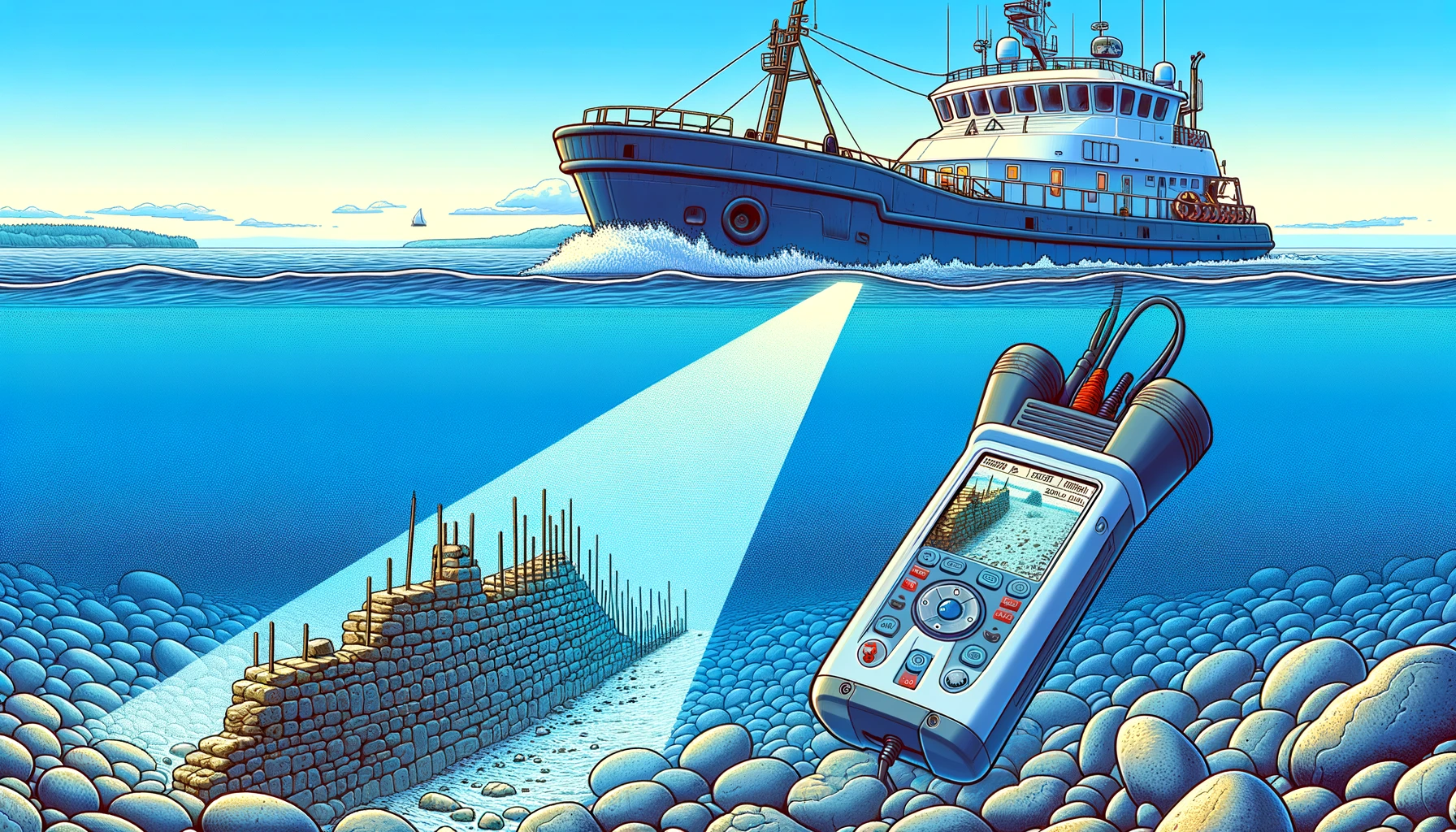In 2021, Jacob Geersen, a marine geologist from the Leibniz Institute for Baltic Sea Research, took a group of University of Kiel students on a unique outdoor learning adventure. They spent a week on the Baltic Sea, aboard a research vessel, to learn about marine geology firsthand. Geersen is a big fan of teaching outside the traditional classroom. He believes that despite the challenges, this kind of immersive experience can be one of the highlights of a student’s academic journey. He mentions, “It’s quite intense,” but for some of the students, “it’s maybe the best time during their studies.”
Their task was to map the seafloor every night with great detail. Geersen notes that these expeditions often lead to exciting discoveries. True to his word, this trip was no exception. Off the coast of northern Germany, in the Bay of Mecklenburg, the students used echosounders to explore underwater and made an unexpected find. The next day, as they reviewed their data, Geersen saw something unusual. They had discovered a long, ancient stone wall, more than half a mile long, lying just beneath the sea’s surface.
This structure, which they named the “Blinkerwall,” turned out to be over 10,000 years old, dating back to the Stone Age. It is believed to have been a massive hunting trap, possibly used to corral reindeer. This discovery sheds light on the sophistication of prehistoric hunter-gatherers, suggesting they had complex hunting strategies involving large-scale constructions.
Geersen and his team were initially puzzled by the structure. Unlike the random stones usually found on the seafloor, these were arranged in a deliberate pattern forming a wall. Upon closer inspection the following year, they confirmed that the wall was indeed man-made, constructed from thousands of movable stones, with larger, immovable rocks at key points.
The significance of their find was not immediately apparent. It wasn’t until they consulted with archaeologists that the true importance of the Blinkerwall came into focus. Berit Eriksen, a prehistoric archaeologist at the University of Kiel, was initially skeptical. However, after examining the data, she became convinced that the structure was indeed made by humans. She humorously remarks, “I don’t believe in UFOs, so it’s got to be manmade.”
Eriksen explains that such a wall would have been used to guide herds of reindeer into a trap, where hunters could then easily hunt them. This suggests that these ancient people were not just wandering the landscape but had a deep understanding of it and planned their hunting strategies accordingly.
The discovery of the Blinkerwall is not only a testament to the ingenuity of Stone Age people but also to the challenges and rewards of underwater archaeology. Ashley Lemke, an underwater archaeologist, praised the work as strong and insightful, highlighting the complexity of working under such conditions. She noted that this discovery, along with others like it, challenges our perceptions of prehistoric people as merely surviving, instead showing them as innovative and strategic builders.
To further understand the use of the Blinkerwall, researchers are looking for more evidence of hunting activities in the area. Eriksen mentioned the possibility of finding remains such as charcoal, arrowheads, or even ancient DNA, which could provide more clues about the people who built and used this structure.
This remarkable find not only offers a glimpse into the past but also underscores the importance of fieldwork in uncovering the secrets of ancient civilizations. It highlights the sophisticated strategies employed by our ancestors, offering a new perspective on their lives and abilities.
This article is based on the following article:

Background Information
By familiarizing themselves with these concepts, the reader will have a better foundation to understand the significance of the discovery made by Jacob Geersen and his team, and the broader implications it has for our understanding of early human societies and their interactions with the environment.
1. Marine Geology and Echosounders: Marine geology is the study of the history, structure, and processes of the ocean floor. Echosounders are tools used by marine geologists to map the seafloor. They work by sending sound waves down to the bottom of the ocean; the sound waves bounce back to the surface, and the time it takes for them to return is used to calculate the depth of the ocean at that point. This technology allows scientists to create detailed maps of the seafloor’s shape and composition.
2. The Baltic Sea: The Baltic Sea is a brackish (semi-salty) sea in Northern Europe, surrounded by countries like Germany, Denmark, Sweden, and Poland. It’s known for its unique environmental conditions and rich history, including remnants of human activity from thousands of years ago.
3. The Stone Age: This period in human history, roughly spanning from 2.5 million years ago to about 10,000 years ago, was marked by the development of the first stone tools by early humans. It is divided into three parts: the Paleolithic (Old Stone Age), Mesolithic (Middle Stone Age), and Neolithic (New Stone Age). The discovery mentioned falls into the Mesolithic period, a time when humans were hunter-gatherers before the advent of farming.
4. Hunter-Gatherers: These were early humans who lived by hunting animals and gathering wild plants for food, rather than farming. They often moved around to follow animal migrations and seasonal growth of plants.
5. Archaeology and Prehistoric Archaeologists: Archaeology is the study of human history and prehistory through the excavation of sites and the analysis of artifacts and other physical remains. Prehistoric archaeologists focus on the periods before written records, interpreting the lives and societies of early humans through their tools, structures, and other artifacts.
6. Reindeer in Prehistory: Reindeer were a crucial resource for Stone Age people, providing food, clothing, and materials for tools. They migrated in large herds, and understanding their patterns was vital for early human hunters.
7. Underwater Archaeology: This is a branch of archaeology that deals with the study of submerged sites, including shipwrecks, flooded settlements, and other ancient structures that lie beneath the water. It involves special techniques for excavation and preservation of finds.
8. Scientific Process and Collaboration: The discovery and study of the Blinkerwall illustrate how scientists from different fields work together, using various methods to investigate and draw conclusions about ancient human activities and their environmental impacts.
Please subscribe to Insight Fortnight, our biweekly newsletter!
